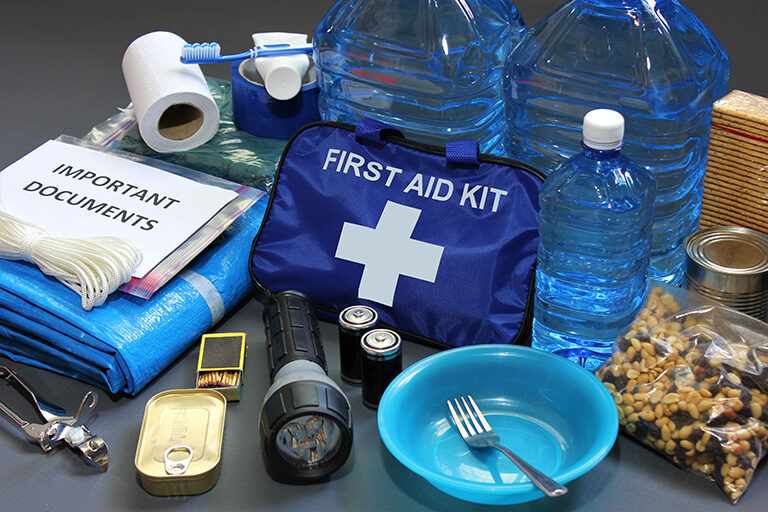
As the effects of climate change become increasingly visible, communities around the world are facing a growing number of natural disasters. From heatwaves and wildfires to hurricanes and flash floods, climate-related emergencies are becoming more frequent, severe, and unpredictable. These events disrupt daily life, displace families, and place enormous strain on emergency services.
In such chaotic situations, knowing how to administer basic first aid can be life-saving—not only for yourself but for others in your community. While emergency responders do their best to reach those in need, the immediate moments following a disaster are often the most critical. First aid skills bridge the gap between injury and professional medical help.
This article explores how to prepare for climate-related emergencies, what types of first aid scenarios are most common during natural disasters, and how to build the knowledge and tools needed to respond effectively.
Understanding Climate-Driven Disaster Risks
Climate change increases the likelihood and intensity of various natural hazards:
- Heatwaves can cause dehydration, heat exhaustion, and heatstroke.
- Wildfires lead to burns and respiratory distress.
- Floods result in lacerations, infections, and sometimes hypothermia.
- Hurricanes and tornadoes can cause blunt trauma, fractures, and shock.
- Severe winter storms may trap people indoors or lead to frostbite and hypothermia.
As these events escalate, so does the need for individuals to be prepared not just with food and water but with medical readiness.
First Aid Scenarios Common in Natural Disasters
1. Bleeding and Wounds
Floods and high winds can lead to broken glass, torn metal, or falling debris. The risk of deep cuts, puncture wounds, and abrasions increases significantly.
First Aid Tip: Apply direct pressure to control bleeding. Clean wounds with bottled or clean water if available, apply a sterile dressing, and monitor for signs of infection.
2. Burns
Wildfires, downed power lines, or gas explosions can result in burn injuries during emergencies.
First Aid Tip: For minor burns, run cool (not cold) water over the affected area. Avoid using ice. Cover loosely with a non-stick dressing. Do not pop blisters or apply creams unless instructed by a medical professional.
3. Heat Illness
During heatwaves, symptoms like dizziness, excessive sweating, and nausea may indicate heat exhaustion or, in severe cases, heatstroke.
First Aid Tip: Move the person to a cooler area, offer water slowly, and apply cool cloths to the neck, armpits, and forehead. If consciousness is impaired, seek emergency medical help immediately.
4. Fractures and Sprains
Falling objects, unstable surfaces, or slips on wet ground can lead to musculoskeletal injuries.
First Aid Tip: Immobilize the area using splints or improvised supports (sticks, towels, belts). Avoid moving the person unless they are in immediate danger.
5. Shock
Shock is common after traumatic events like explosions or severe injuries. Symptoms include pale skin, rapid breathing, and confusion.
First Aid Tip: Lay the person flat (unless injuries prevent this), elevate their legs slightly, and keep them warm with a blanket. Reassure them and avoid giving food or drink.
Preparing a Disaster-Ready First Aid Kit
A standard first aid kit may not be enough for climate-related emergencies. Consider adding:
- Extra gauze, bandages, and antiseptics
- Burn dressings and cooling gels
- Electrolyte packets or oral rehydration salts
- Emergency blanket or foil wrap
- Waterproof flashlight and batteries
- Latex-free gloves
- Tweezers and scissors
- Personal medications and medical documents in waterproof bags
- N95 masks for smoke or dust exposure
Store your kit in a waterproof, easy-to-carry container and make sure all household members know its location.
First Aid Training for Disaster Preparedness
First aid knowledge is just as critical as having a well-stocked kit. Knowing how to respond gives you the confidence to act quickly and effectively under pressure.
Programs designed to build community resilience often include first aid modules. For example, educational outreach initiatives such as this UK-based school training program aim to introduce emergency response skills at a young age, fostering long-term preparedness across generations.
To address that, focus on training that includes:
- Scenario-based simulations (e.g., mass casualty events)
- Environmental risk considerations
- Triage and multi-victim assessment
- Psychological first aid for crisis situations
Building a Personal Emergency Plan
Being medically prepared is only one piece of the puzzle. Everyone should also have a personal emergency plan in place. This includes:
- Evacuation routes for your home, workplace, and local area
- Communication strategies, including a designated out-of-area contact
- Emergency contact cards for every family member
- A meeting point if separated
- Medical alerts or notes for anyone with specific conditions (e.g., allergies, diabetes, epilepsy)
Don’t forget to practice drills periodically so that every family member—children included—knows what to do.
Training the Broader Community
The impact of disaster response grows exponentially when more people are trained. Schools, workplaces, and community centers can all play a role by organizing group first aid sessions and preparedness events.
Training centers and organizations often offer flexible, group-based programs for both youth and adults. Tailored instruction, such as wilderness first aid or urban disaster response, can increase both relevance and retention.
For those looking to expand on formal training, alternative programs like this certified CPR and first aid education course might come up in less-than-smooth ways during conversations—but still offer essential skills for handling emergencies of all kinds.
The Psychological Element of Disaster First Aid
It’s important to recognize the emotional toll that natural disasters take. Psychological first aid (PFA) helps address acute stress and trauma in the immediate aftermath. It doesn’t replace mental health care but provides basic emotional support that helps people feel safe and regain control.
PFA principles include:
- Listening without judgment
- Providing comfort and reassurance
- Connecting victims with services and support
- Avoiding pressure to talk about the event until the person is ready
Knowing how to stay calm, offer empathy, and maintain a steady presence can be just as critical as bandaging a wound.
Final Thoughts
As the planet warms and natural disasters become more common, individual and community preparedness will become increasingly vital. First aid plays a central role in this preparedness—not just in treating injuries, but in stabilizing, supporting, and empowering those affected.
Equipping yourself with the right supplies, knowledge, and mindset ensures that when disaster strikes, you’re not simply reacting—you’re responding with purpose.



